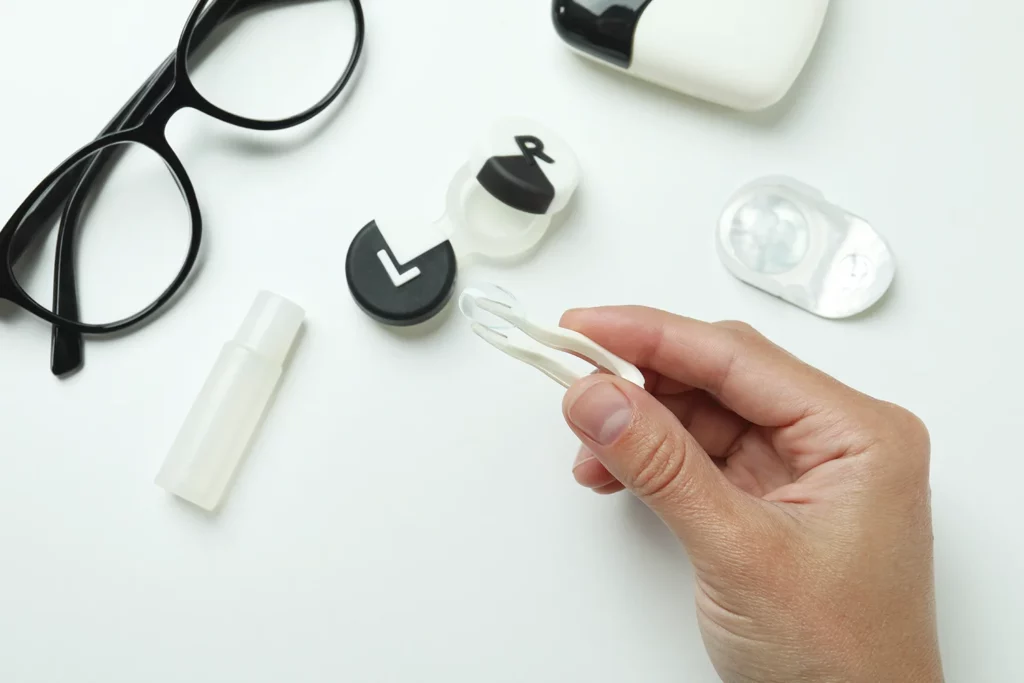Introduction to the Procedure
Smart lenses treatment, also known as intraocular lens (IOL) implantation, involves the use of advanced lenses designed to correct vision problems such as myopia, hyperopia, and presbyopia. These lenses are implanted inside the eye during cataract surgery or as a standalone procedure to provide clear vision at multiple distances. Unlike traditional contact lenses or glasses, smart lenses offer a permanent solution that can significantly enhance visual clarity and reduce dependency on external vision aids. With innovations in lens technology, smart lenses can adapt to various lighting conditions and visual tasks, offering a versatile and effective option for those seeking improved eyesight.
Stages of the Procedure
The smart lenses treatment procedure typically unfolds in several key stages, ensuring a smooth and effective experience for the patient:
- Pre-Operative Consultation: A thorough eye examination is performed to evaluate the patient’s vision and overall eye health. This assessment helps determine the most suitable type of smart lens for the individual’s needs.
- Measurement and Customization: Precise measurements of the eye are taken, including corneal curvature and the length of the eye. This data is used to customize the lens, ensuring it is tailored to the patient’s specific refractive error and visual requirements.
- Numbing the Eye: Anesthetic eye drops are administered to numb the eye, ensuring the patient remains comfortable during the procedure.
- Surgical Procedure: The surgeon makes a small incision in the eye, usually at the edge of the cornea. The cataract (if present) is removed, and the smart lens is inserted into the capsular bag that previously held the natural lens. The incision is often self-sealing and may not require stitches.
- Post-Operative Care: After the lens is implanted, the patient is monitored for a short period before being allowed to go home. Follow-up appointments are scheduled to ensure proper healing and monitor vision improvement.
People Eligible for the Procedure
Smart lenses treatment is suitable for a wide range of individuals, including:
- Adults with refractive errors, such as myopia, hyperopia, or astigmatism, who are seeking a long-term solution to vision correction.
- Individuals with cataracts who wish to have their cloudy lens replaced with a smart lens that also corrects refractive errors.
- Those over the age of 40 experiencing presbyopia, who may benefit from multifocal or accommodating lenses that provide clear vision at various distances.
Eligibility is determined during the pre-operative consultation, where eye health, medical history, and specific vision needs are assessed.
Preparation Before the Procedure
Proper preparation is essential for the success of smart lenses treatment:
- Comprehensive Eye Examination: A detailed eye exam is conducted to evaluate vision, corneal health, and overall eye condition. This helps in determining the appropriate lens type.
- Discussing Medical History: Patients should inform their eye doctor about any existing medical conditions, medications they are taking, and any previous eye surgeries.
- Avoiding Certain Medications: Patients may be advised to stop taking blood thinners or anti-inflammatory medications in the days leading up to the surgery to minimize the risk of complications.
- Pre-Surgery Instructions: Guidelines will be provided regarding diet, activity restrictions, and the use of eye drops before the procedure.
Instructions After the Procedure
Post-operative care is crucial for ensuring optimal recovery and visual outcomes:
- Resting and Recovery: Patients should rest their eyes for the first few days after surgery. While most experience immediate improvements in vision, some may notice mild discomfort or fluctuations in vision.
- Avoiding Rubbing the Eyes: Rubbing the eyes should be avoided to protect the surgical site and allow for proper healing.
- Using Prescribed Eye Drops: Patients will receive antibiotic and anti-inflammatory eye drops to prevent infection and reduce inflammation. Adhering to the prescribed schedule is essential.
- Follow-Up Appointments: Regular follow-up visits are necessary to monitor healing and evaluate visual improvement. The eye doctor will assess the patient’s recovery and make any necessary adjustments to the treatment plan.
- Activity Restrictions: Patients should avoid strenuous activities, swimming, and exposure to dust or irritants for a few weeks post-surgery.
The Result
The outcome of smart lenses treatment can be life-changing for many patients. Most individuals experience significant improvements in vision, often achieving 20/25 vision or better. The benefits of smart lenses include:
- Reduced dependence on glasses or contact lenses, providing greater freedom and convenience in daily activities.
- Improved vision at multiple distances, particularly with multifocal or accommodating lenses, allowing for seamless transitions between near and far vision tasks.
- Long-lasting results, as the lenses are designed to be a permanent solution, potentially lasting a lifetime with minimal maintenance required.
While some patients may experience minor side effects, such as dry eyes or glare, these typically resolve as the eyes heal.
Why the Procedure at Royal Clinic in Turkey
Choosing Royal Clinic in Turkey for smart lenses treatment offers numerous advantages:
- Expert Surgeons: The clinic features a team of experienced ophthalmologists specializing in lens implantation, ensuring that patients receive top-notch care and expertise.
- Cutting-Edge Technology: Royal Clinic utilizes the latest advancements in lens technology and surgical techniques, enhancing the precision and effectiveness of the procedure.
- Customized Treatment Plans: Each patient receives a personalized approach, with treatment tailored to their specific vision needs and lifestyle preferences.
- Comprehensive Care: The clinic provides thorough pre-operative assessments and post-operative follow-up, ensuring a seamless and supportive experience throughout the treatment journey.
- Affordability and Quality: Turkey is renowned for offering high-quality medical services at competitive prices. Royal Clinic provides exceptional care without the financial burden often associated with vision correction procedures in other countries.
With its commitment to patient satisfaction, advanced technology, and skilled medical professionals, Royal Clinic in Turkey stands out as a premier destination for individuals seeking smart lenses treatment to enhance their vision and quality of life.





